Dairy Farming in India – Introduction
Introduction to Dairy Farming in India
Dairy farming in India has been prevalent from the times immemorial.
It is generally viewed as family business that has been passed down from generations to generations. One of the foremost dairy farming persona was Gopal – Shri Krishna.
In India, dairy farming and agriculture go hand in hand. The farmers rear cows and buffalo along with their full time agriculture business, to make some extra bucks.
As the time passed, this so called family business found its way into a new era of dairy farming that was much more organized, technologically advanced and as a result much more profitable.
However in earlier times, the hard fact is that instead of being an asset to the farmers/dairy farmers, it has started turning into a loss making business for them.
Low productivity and High cost of milch animals, their upkeep, their vaccination, lack of fodder management, and higher number of manpower hours being put into the care of the animals started is affecting the dairy farming business in the country.
Most of the dairy farmers began to shirk away from the business and those who continued faced difficulties in surviving and reared cows only to satisfy home requirement of milk and submitting extra milk produce to Milk Collection Centers.
“White Revolution” in India changed the landscape of Dairy Farming and Milk Production in India in 1970s.
White Revolution for Dairy Farming in India
White Revolution, also known as Operation Flood, was the brain child of Dr. Verghese Kurien – a social entrepreneur, who came up with this “billion liter idea” in the year 1970.
The major aim of the revolution was to make the country self sufficient in the production of milk and to enhance the productivity of milk and other milk products by proper and efficient management of cattle and other milk producing animals.
At present India has the highest production of milk in the world and home to around 12 million farmers in more than 22 states across the country own around 250 dairy plants handling around 20 million litres of milk a day.
How to Guide: Starting a Dairy Farming Business:
Being established that, India is the largest producer of milk in the world and being unaware about the actual profit margins in the business many farmers, new age entrepreneurs, enthusiasts, IT engineers and also investors are keen about opening their own dairy farm or entering into milk business.
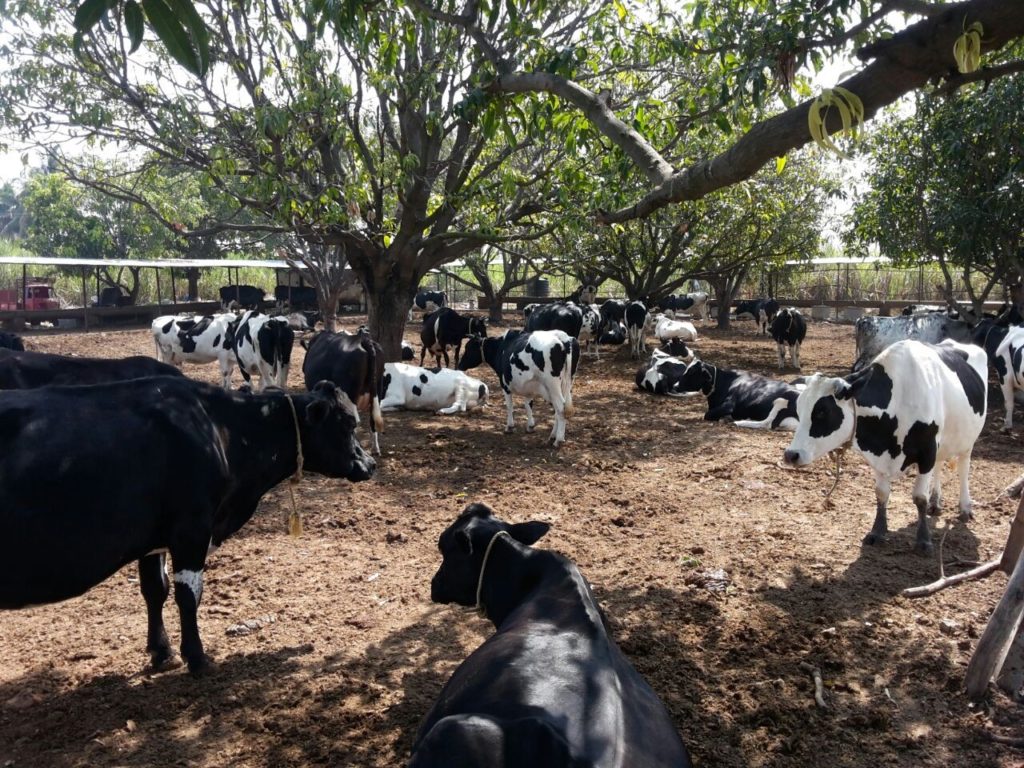
Dairy Farming in India
Howsoever lucrative it may seem, just like any other business, dairy farming also requires a lot of commitment, effort, promise and time on the part of the dairy farmers.
It is important to understand that dairy farming is much more than just rearing a few milch animals for the production and supply of milk and milk products.
Any aspiring dairy farmer before start-up needs to take following things into consideration before taking a plunge into this business:
- Investment required;
- Sufficient Land required;
- Type of breeds/number of animals to be acquired;
- Fodder Management;
- Prevention from diseases/vaccination of animals;
- Breeding;
- Maintenance of records;
- Research local milk market;
- Climatic conditions.
Now, each of these points mentioned above are just a tip of the iceberg. They need to be studied in depth to better understand the circumstances involving a successful dairy farming business. These 9 points are explained below in detail.
The guide below is useful for both existing dairy farms and brand new entrants. If you are starting from scratch and short on time, you may want to read 5 steps on How to Start Dairy Farming business from scratch
Investment for Dairy Farming
As with any other business, dairy farming business also requires a certain some of investment in the beginning to give it a boost. In fact, dairy farming for a decent economic scaling requires significant investment, including purchase of animals, leasing purchasing of land, construction of shade.
It is not possible to pinpoint the exact amount of investment that is required as there are a number of factors that contribute towards calculating the investment required such as:
- Whether the property/land for the dairy farming business is self owned/rent.
- Whether skilled manpower is available in the area.
- Whether fodder is readily available/scarce/grown on the farm/purchased.
- Overhead cost of water/electricity/building of shed etc.
- Breed of dairy animals bought/ number of dairy animals bought
- Construction of shed for Dairy Farming
- Machines and tools required for milking and upkeep of animals.
It the prerogative of the dairy farmer to start with one dairy animal, 5 animals or 20 dairy animals. As the recurring income is from lactating cows or buffalo, it is quite safe to say that once the production line is in order, a farmer has more chance to make a profitable business with a large herd of dairy animals.
Land Requirement for Dairy Farming in India – What should be area of the Dairy farm ?
For Dairy Farms with planned capacity of large herd size, the land is required for shed area and also for open space for the animal’s loose housing, milking parlor, feed store, implements room, straw store, maternity pens, manure pits, manger area, office area, footpaths etc.
For smaller farm size, land for shed, open space, fodder growing and for small storage area may suffice.
About 65-70% of the total land is utilized for keeping the animals whereas the rest may be divided into utilities as described above.
With loose housing it is recommended that 200 sq feet of space may be provided per cow. Approximately 4000 sq ft. of area for a herd of 20 animals will be required at the minimum. The more area per animal the better. Thus, a startup dairy farming plant will require 500 sq feet per animal considering the all essential utilities and spaces.
Following space requirement is recommended : (source with derivations to liberal side)
| Age/Status of dairy animal | Standing /covered Space Required (sq ft) |
|---|---|
| Cows | 100-200 |
| Pregnant cows | 200 |
| New born calf-6 months old | 10-20 |
| 6-12 months old | 20-40 |
| 1-2 years old | 40-60 |
| Bulls | 75-100 |
Further, the requirement of space also depends upon the climate of the area where the farmer is planning to set up the dairy farm.
For example, if the area is hot and humid, the animals require more open space whereas if the area experiences a lot of rainfall, the farmer has to make adequate number of sheds to protect the animals from rain.
Number of Animals for Dairy Farming
For a new dairy farmer, it may seem be a lot of investment at first but as the years go by, dairy farming business, if managed properly, can be a very fruitful business.
For the first couple of years or more, at the start of business, the investment may be more than the profit made.
Once the farm operations are stabilized and the consistency in the production is achieved, dairy farming business becomes sustainable and profitable subject to milk rates prevailing and ability to market the milk locally.
The number of animals procured by a dairy farmer, as mentioned earlier, may be as low as one. It is up to the dairy farmer to decide the investment of the dairy.
However, when the farmer has less number of cows, it is even difficult to bear the overhead costs let alone make it a profitable business. It is thus, advisable to start the business with planned capacity of at least a 10-15 dairy animals or be patient with break even point to arrive late.
Breed Selection for Dairy Farming
The type of breed that a dairy farmer shall acquire depends upon the type of market he wants to capture.
For example, different breeds of cows are recommended for different product types such as milk, cream, cheese etc.
India has a large variety of bovine population. It is basically due to its rich bio-diversity. As many as 40 well defined breeds of cattle and 13 well defined breeds of buffaloes can be identified in the country. Some very popular indigenous breeds of cows that are reared by the dairy farmers are provided below
| Breed | Originating state | Approx. Milk Production per lactation (on average) |
|---|---|---|
| Gir | Gujarat | 1600 kg |
| Sahiwal | Haryana/Punjab | 1350 kg to 2100 kg |
| Tharparkar | Rajasthan | 913-2147 kg |
| Red Sindhi | Rajasthan | 1700-3400kg |
| Rathi | Rajasthan/Haryana | 1062-2810 kg |
| Kankrej | Gujarat/Rajasthan | 1738 kg |
| Ongole | Andhra Pradesh | 798 kg |
| Krishna Valley | Andhra Pradesh/Karnataka | 900 kg |
| Deoni, | Maharashtra | 638-1229 kg |
| Dangi | Maharashtra | 175-800 kg |
| Red Kandhari | Maharashtra/Karnataka | 400-600 kg |
| Khillari | Maharashtra/Karnataka | 451 kg |
| Source : NDDB Knowledge portal |
Apart from these indigenous breeds of cattle, some exotic milch cattle are also very popular among the dairy farmers, as the production of milk is more in exotic breeds of cattle. Following are some of the famous exotic foreign breeds of cows used in Dairy farming in India – often crossed with Indian breeds for adaptation.
| Breed | Originating state | Approx. Milk Production per lactation (on average) |
|---|---|---|
| Jersey | Jersey Island, U.K. | 4500 kg |
| Holestein Freisian | Northern parts of Netherlands | 6000-7000 kg |
| Brown Swiss | Switzerland | 5000 KG |
| Red Dane | Denmark | 3000-4000kg |
| Guernsey | Guernsey in France | 6000 kg |
Apart from cows, dairy farmers in India also rear buffaloes in large numbers, for the production of milk and milk products. In fact, India has the largest number of buffaloes in the world.
Some of the very popular buffaloes breeds seen in the dairy farms all across the country are:
| Buffalo Breed | Originating state | Approx. Milk Production per lactation (on average) |
|---|---|---|
| Murrah | Haryana/Punjab | 1500-2500 kg |
| Surti/ Deccani | Gujarat | 1000-1300 kg |
| Jaffrabadi | Gir forests (Gujarat) | 1000-1200 kg |
| Bhadawadi | Uttar Pradesh/Madhya Pradesh | 800-1000 kg |
| Nilli Ravi | Punjab | 1500-1850 kg |
| Mehsana | Gujarat/Maharashtra | 1200-1500 kg |
| Nagpuri | Nagpur/Aloka/Maharashtra | 700-1200 kgs |
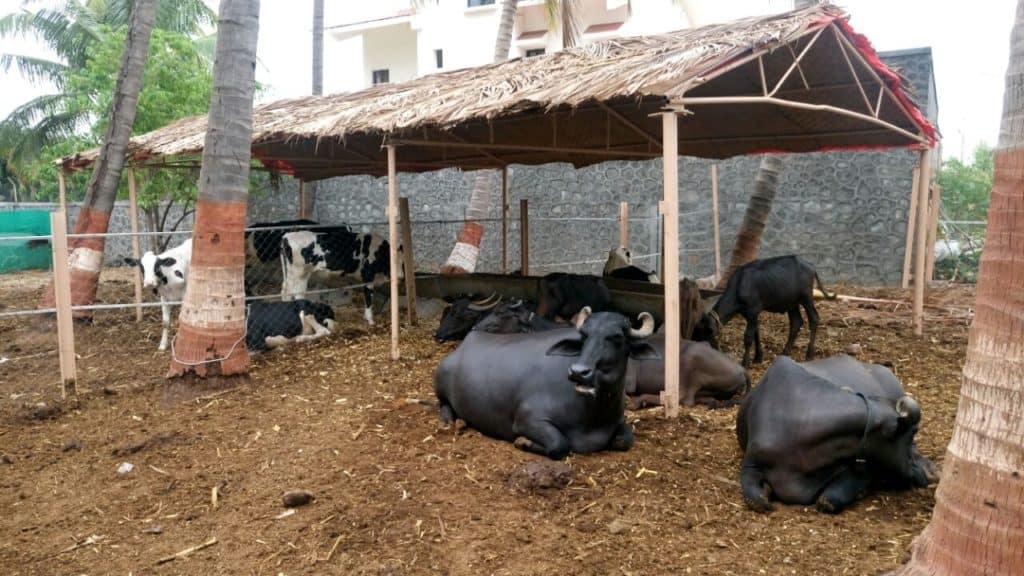
Fodder Management for Dairy Farming in India
Just like the humans, dairy animals also need to be fed properly with balanced rations or rationed meals.
The meals should be so designed that they incorporate all the essential nutrients and minerals as it not only helps in keeping the animal healthy but also in turn increases the milk production.
Optimum Fodder management is a must for any possibility of success for an aspiring dairy farmer. Fodder management doesn’t only including providing fodder for the day but also keeping longer perspective in mind and storing and stocking the fodder for the period of scarcity or other unpredictable calamities such as the corona outbreak in 2020.
PowerGotha recommends you have stored the fodder for the whole year in advance. And silage making is an essential part of Fodder Management.
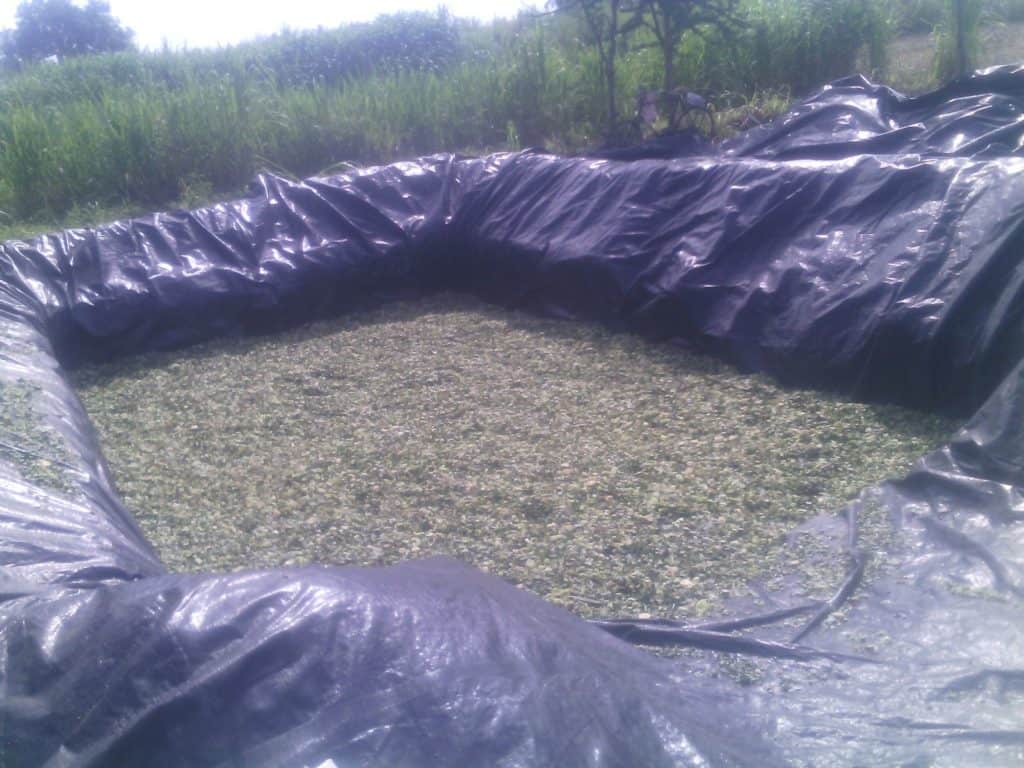
The following things need to be kept in mind while going through fodder management:
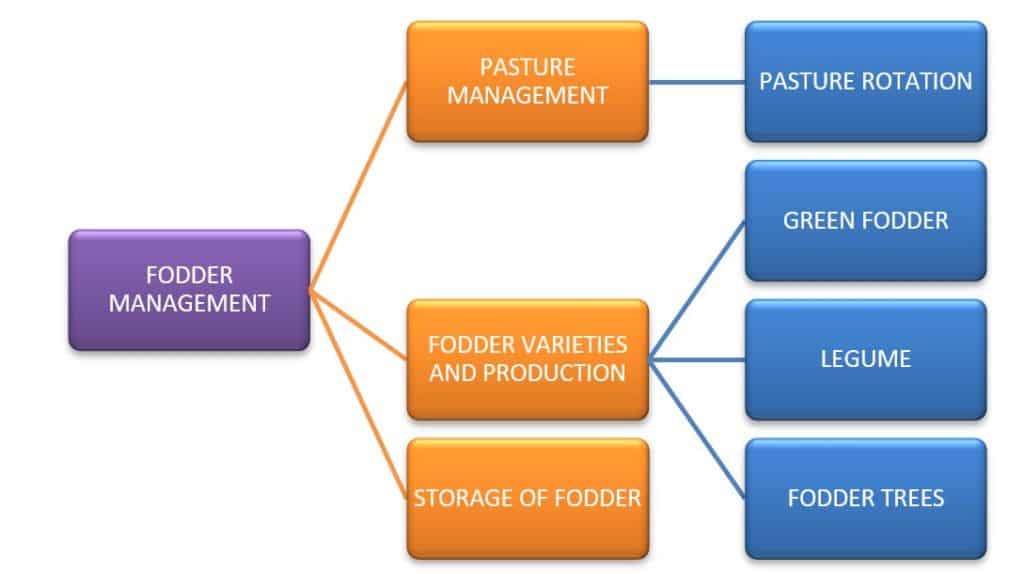
The fodder management doesn’t end at these steps. The dairy farmer is also advised to balance the ration when it comes to feeding the milch animals. The feed intake depends on the dry matter in the feed.
The total dry matter requirement of cattle is around 2-3 % of their body weight though high yielding animals may eat at a rate more than 3%
– http://agritech.tnau.ac.in/
A sample basic dietary plan for Dairy farming cows and buffaloes is provided below:
- Desi/Indigenous cows= 2kg (dry) to 2.5 kg (lactating) dry matter per 100kg body weight
- Cross bred cows/buffaloes =2.5 kg(dry) to 3kg(lactating) dry matter per 100 kg body weight
Concentrate requirement
- Maintenance requirement (desi cow/cross bred cow/buffalo)= 1 to 1.5 kg
- Lactating animal = additional 1kg for every 2.5 kg (buffalo) and 3 kg(cow) milk produced.
- Pregnant animals (cows/buffaloes)= additional 1kg during advanced stage of pregnancy.
- Breeding bulls= additional 1 kg per day
- Mineral Requirement= Mineral mixture+ common salt (20-50 gm each)
Disease Management for Dairy Farming
The animals being alive species are prone to various diseases just like humans are. The management, prevention and containment of likely and known diseases plays a very vital part in reduction of cost and maintaining a stable milk production output at any Dairy farm.
Vaccination and Prevention of Diseases
Proper and timely vaccination of the animals can save the dairy farmers a lot of time, effort and money.
Just like timely vaccination is important for a new born baby, appropriate vaccination is also advisable for dairy animals.
These vaccinations help in preventing the animals fall prey to the deadly diseases. The vaccination schedule for the animals is usually available with any veterinary clinic. A chart of vaccination is also provided below (Source: NDDB handbook for Good Dairy Practices)
| Type of disease | Age at first vaccination | Booster Dose (if any) | Subsequent dose (if any |
|---|---|---|---|
| Theileriosis | 3 months & above | - | Once in lifetime and only for the crossbred and exotic cattle |
| IBR | 3 months & above | 1 month after first dose | Six monthly |
| Foot and Mouth disease (FMD) | 4 months & above | 1 month after first dose | Every six months |
| Black Quarter (BQ) | 6 months & above | - | Annually if the scenario is endemic |
| Haemorrhagic Septicaemia (HS) | 6 months & above | - | Annually if the scenario is endemic |
| Brucellosis | 4 to 8 months aged female calves | - | Once in lifetime |
| Anthrax | 4 months & above | - | Annually if the scenario is endemic |
| Rabies (Post bite therapy only) | Immediately after suspected bite. | 4th day | 7,14, 28 and 90 (optional) days after first dose |
| Source |
Breeding Management for Dairy Farming
Breeding for dairy farming, as the name suggests, is the crossing of male and female animals to produce offspring.
Now, there are two types of breeding prevalent in dairy farming and these are the in-breeding or out-breeding.
In breeding means that the breeding is basically close/line breeding. In simple words it can be said that the animal is having one or more common ancestors. In case of out-breeding the animals, share no common ancestors history.
The types of In-breeding and out- breeding are:
IN-BREEDING:
1) Close Breeding
2) Line Breeding
OUT-BREEDING:
1) Pure Breeding
2) Line Crossing
3) Cross Breeding
4) Grading Up
5) Out Crossing
6) Species Hybridization
Record Keeping for Dairy Farming
Another vital aspect of dairy farming, which is usually looked over by the aspiring farmers, is the maintenance of records.
It is very important for a dairy farmer to keep records of the animals, not only in terms of the procurement of animal but also in terms of their age, growth, vaccination, breeding, lactation time etc. Read here on how to keep records for top class breeding policy.
The record maintenance doesn’t actually end with the upkeep of records of the animals but also includes keeping the records of the overhead expenses like purchase of fodder, nutritional value of fodder provided to the animals, maintenance of farm, payment of salaries, water supply, electrical supply etc.
In olden days, the record maintenance was not given much of an importance as most of the dairy farms were run as the age old family businesses and not to earn a living. Thus, there was no record of the things like number of man-hours put in for work, upkeep of farms etc. Also, in almost all the dairy farms, the workers were the family members only, so there was no distribution of salaries.
But with the advent of new technology and the increase in the working knowledge of the dairy farmers, it has become a lucrative business opportunity with more and more farmers being drawn towards it.
Today, the dairy farmers are more educated and technology friendly. This has become a plus point in the dairy farming business. The dairy farmers are more open and inclined towards adopting the new technology, may it be keeping records or usage of tools/machines for milking etc. Various record keeping methods such as notebook, bahi-khata, Computer, Excel, spreadsheets can be used for Dairy farming.
We have made it easy and available at minuscule or free of cost to the dairy farmers for the upkeep of all the records of their farm through our app PowerGotha Pashupalan Dairy farming app.
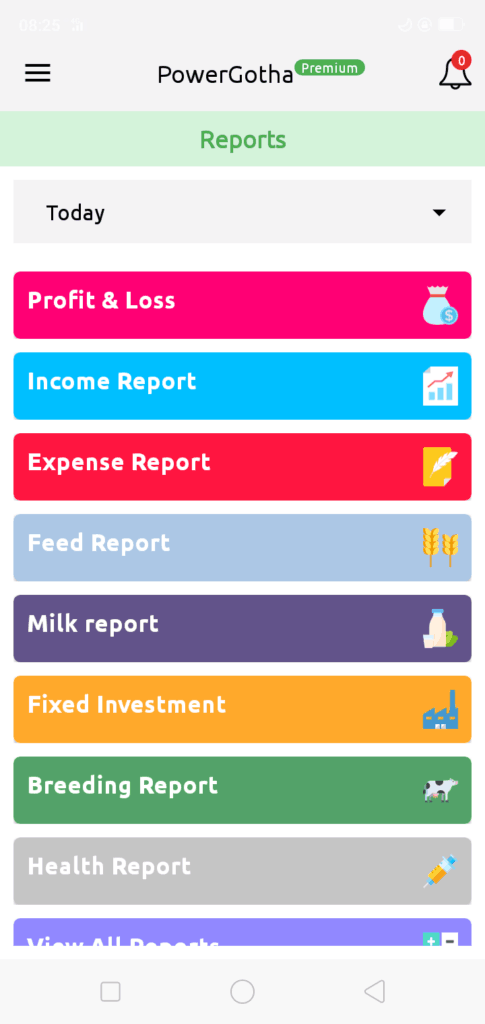
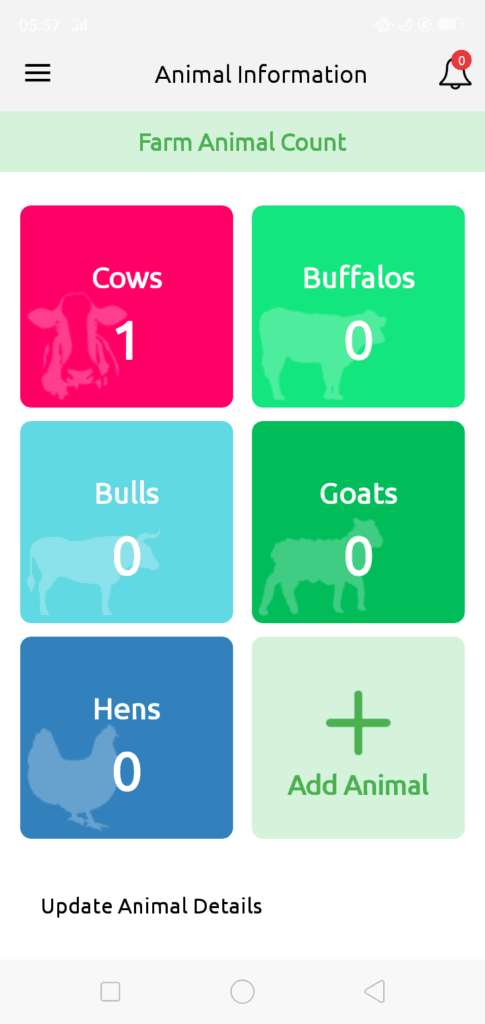
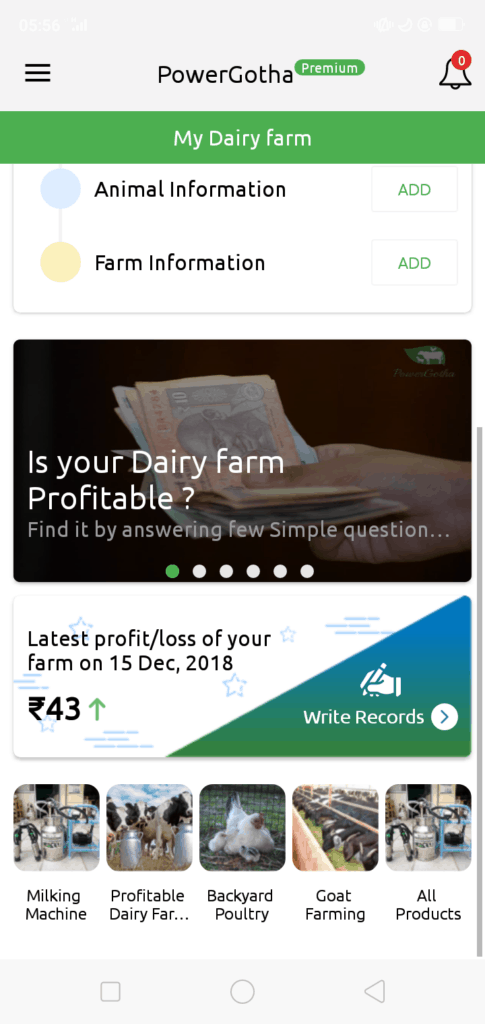
It is a user friendly app available in English, Hindi, Marathi and Telugu currently which allows the farmers to upload all the information and view the real time reports without spending any amount of money for hiring a professional for the same.
Various reports that can be viewed on PowerGotha Dairy Farming app are:
1) Profit and loss
2) Income Report
3) Expense Report
4) Feed Report
5) Milk Report
6) Fixed Investment Report
7) Breeding Report
8) Health Report
9) De-worming Report
10) Bio-security spray
PowerGotha app is a comprehensive solution to all the queries and questions that hover around the minds of a first time and a well groomed dairy farmer.
The dairy farmer user is able to view all the reports for various time periods and from any location. There is no need for computer or notebooks for keeping bulky records as the app. makes it readily available at a single click from cloud.
Research of Market for Milk in Local area for starting Dairy Farming
Before starting a dairy farming business, it is very important for the farmer to thoroughly research about the local milk market and the segmentation of market.
For example, opening a dairy farm with a herd of 50 cows in a small town with limited population, where there is already family run dairy businesses are going on for years is never a good business strategy.
The farmer needs to evaluate the market for the consumption of his end product. The village/town/state may have some tie-ups with big milk producers that buy the milk from the farmers . In case a dairy farmer wants to open up a huge dairy farm, it is advisable that the farm should is in vicinity of such big milk plants to supply milk to them.
Further, as already discussed, a dairy farmer also needs to be clear what his end product is. Like, some breeds of cows/buffaloes produce milk that is rich in cream and some have more milk production capacity and less cream. The farm should be managed while keeping in mind the demand of the market.
Climatic Conditions for Dairy Farming
Considering the fact that milch animals have evolved and well adapted to the climatic conditions prevalent all over the country, it is true that some breeds adapt to climatic conditions of some areas more so than the others. Also, the adverse climatic conditions are a known cause of rise in diseases as well as low production of milk in many breeds of cows/buffaloes. This is especially true for pure foreign breeds or crossbreeds who are prone to heat scare in Indian Conditions.
As per a report published in Times Of India dated May 23,2016-
“Indian dairy scientists estimate that climate change will lead to decline in milk production by over 3 million tonnes (MT) per year by 2020. The projections, shared by the Nation Dairy Development Board (NDDB) with the agriculture ministry, should be cause for worry considering the growing demand for milk in the country, estimated at 200 MT by 2021-22”
Thus the requirement of shed.
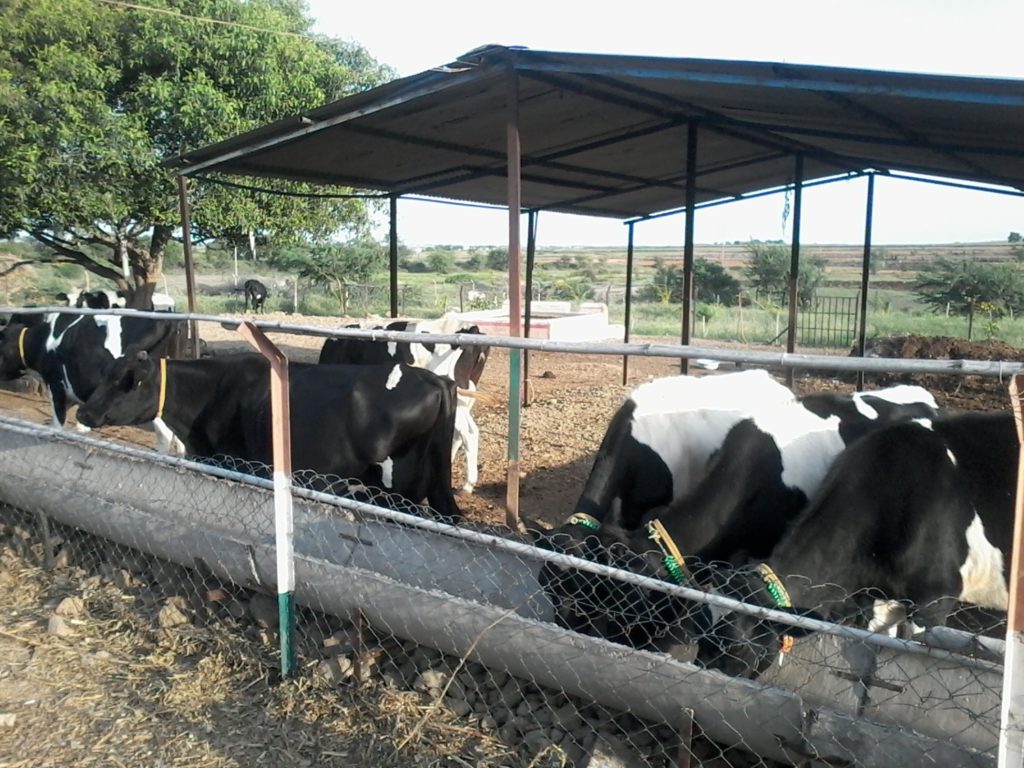
A typical Dairy farm in Maharashtra with Loose housing
Also, it is a known fact the production of milk reduces in the summer season. The reason behind the same is that it takes a lot of energy of the cows/cattle/buffaloes to digest the food and the process produces a lot of heat. More energy is spent in panting and more blood flows to their skin and they sweat. The result is loss of appetite and in turn less production of milk.
It can be estimated that on average cows produce 33% less milk in summer season as compared to winter season. Thus, it is important to keep the animal cool.
Further, the chances of diseases also increase in the summer season due to profuse sweating and lack of appetite. So, regular cleaning of animals as well as the cool shed area is mandatory. With proper management the Desi and even the exotic cows can be made to adjust to the climatic conditions of the country and if necessary steps are taken, dairy farmers can manage the summer season quite smoothly.
Profit Loss Record Keeping for Dairy Farming
Dairy farming is record intensive business. The profit and loss depends on Milk Rate, Milk quality, Disease free cows, Fodder Management, Mechanization of dairy farm, better breeding policy etc. Read here on how you can maintain records for your new Dairy farm from start.
Some Other articles you may also like on PowerGotha
If you haven’t yet started with dairy farming, you can read about starting a new dairy farm here.
What is PowerGotha – Concept of Profitable Dairy Farming
Silage Making for keeping Costs low and profitable milk business
About PowerGotha
PowerGotha is a movement to make Indian Dairy Farming profitable. We provide training, software, products, services, solutions to existing or new dairy farmers. We are mentored by Dr Shailesh Madane, a Veterinarian, dairy expert and dairy farm consultant. You can read about Dr Shailesh Madane here
You can mail us with your queries at support @ powergotha . com
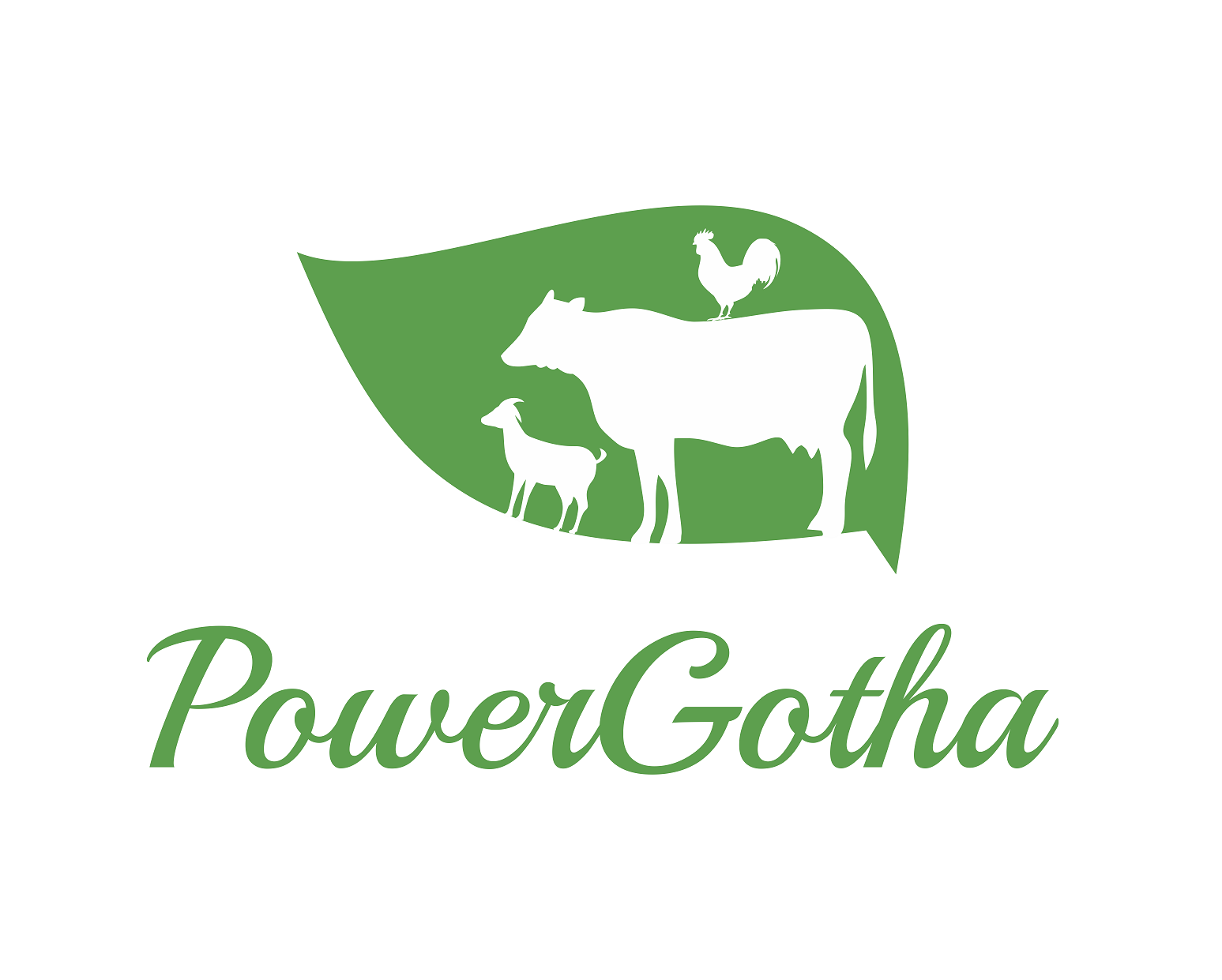
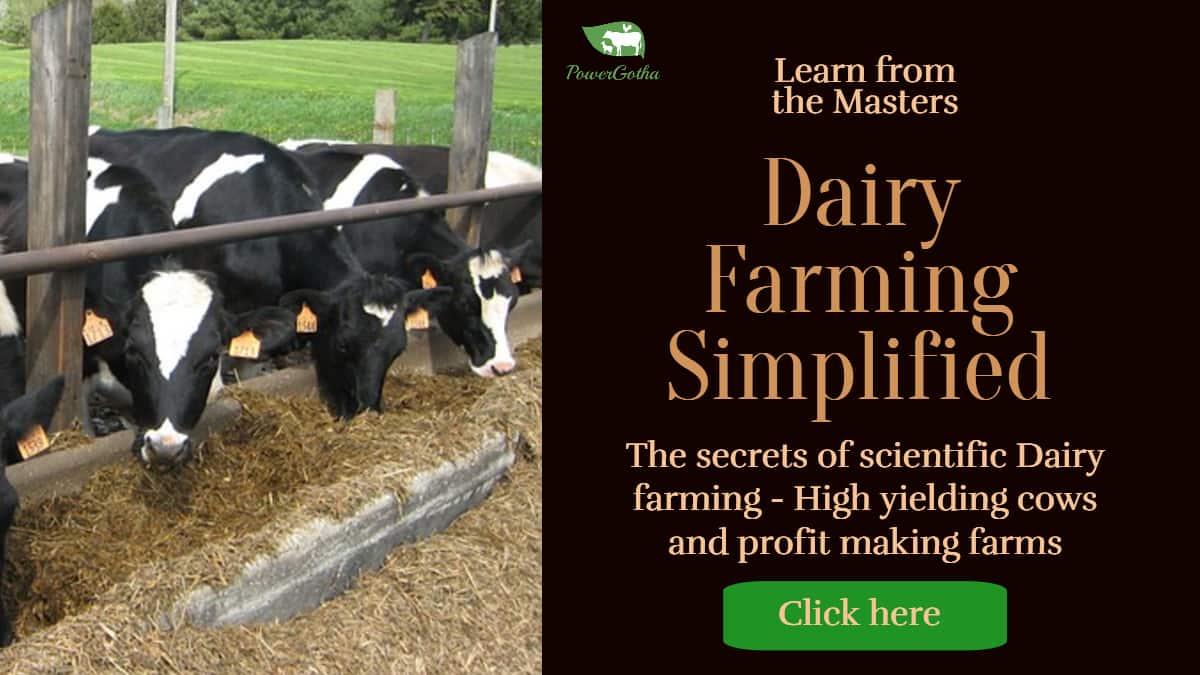
Shoeb
April 13, 2021 at 1:23 amWorth a read, thank you for the information on all the pages posted, planned to start a dairy business in hyd, and have been trying to study from here and there formy research and this article was very helpful (have read almost all the articles related to dairy farms) and was worth it, thanks to power gotha and Dr sailesh Madane for the useful info, if there is a possibility to meet him (will be a pleasure)
Sandeep
September 25, 2020 at 5:50 pmGreat learning
Sagar Bhadrige
July 28, 2020 at 10:51 amIt’s really helpfull information regarding dairy farm, indian milk production will be growing due to this helping post. Pleasr share your contact details or pls call us to get more knowledge regarding Dairy farm start in Junnar Pune. 9819965967
Sagar Bhadrige
July 28, 2020 at 10:50 amIt’s really helpfull information regarding dairy farm, indian milk production will be growing due to this helping post. Pleasr share your contact details or pls call us to get more knowledge regarding Dairy farm start in Junnar Pune. 9819965967
Dr.S.K. Gandhi
February 29, 2020 at 7:20 amQuite comprehensive and informative article in the field of dairy farming in India.
टीम पॉवरगोठा
March 2, 2020 at 3:45 pmThank you Sir
Keep reading and sharing with dairy farmers.
Prof. Dharam Vir Malhotra
February 29, 2020 at 6:12 amDairy Farming particularly on Scientific Lines is one of the important sources of Livelihood & regular source of Income in Rural India. The write up is nicely written & will provide useful information to the Farmers Who want to Venture in Dairy Farming to enhance their Income.
टीम पॉवरगोठा
March 2, 2020 at 3:45 pmThank you Sir
Keep reading and sharing with dairy farmers.